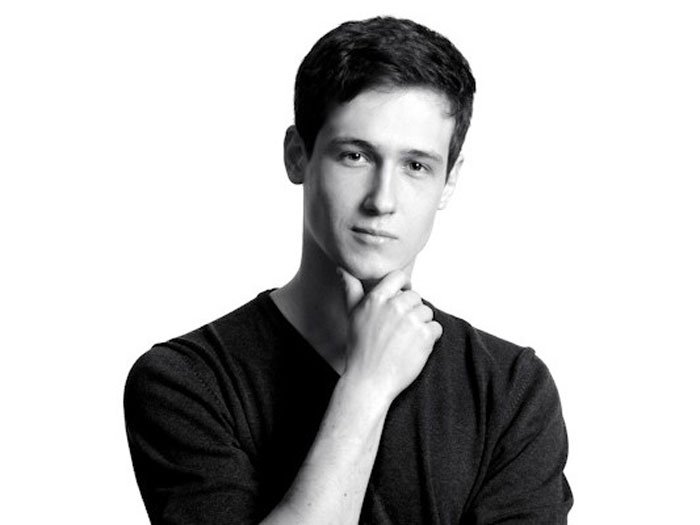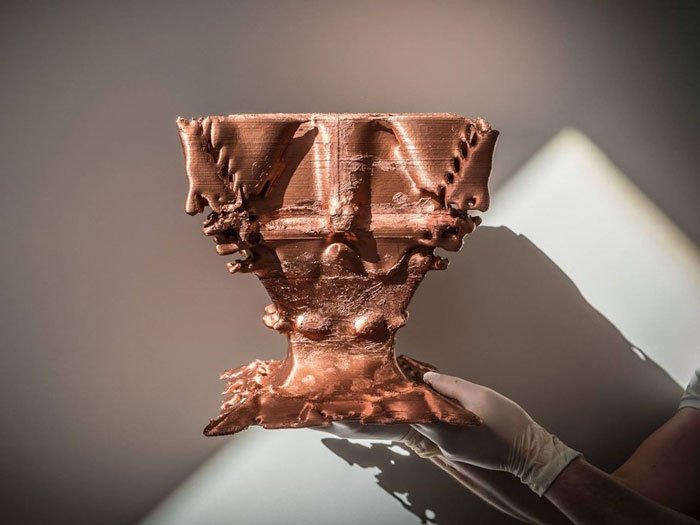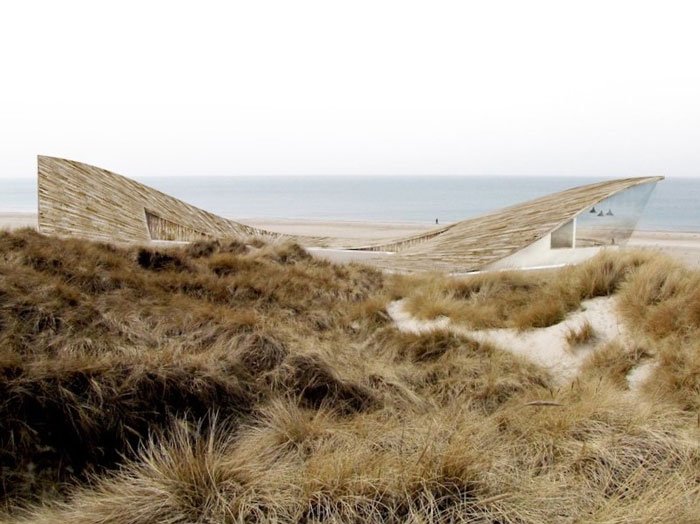Buildings, whole cities packed with sensors and video surveillance systems are generating an increasing amount of data. The more data we are able to gather, the more sense it will make to use machine learning in architecture, says Kacper Radziszewski in conversation with Monika Redzisz
Monika Redzisz: You are the first person in Poland who decided to hold machine learning workshops for architects. I’ve never heard about artificial intelligence in architecture.
Kacper Radziszewski*: Well, it takes a really long time to implement any new technology, such as SI, VR or 3D, in architecture. Architecture warms to such solutions gradually. It takes it a while to get used to them.
Why?
It’s a responsible domain. Besides, architecture is often considered by architects as one of the last bastions of the real craft and art. Every attempt to change the status quo is doomed to face an icy reception. Visualizations, which are now commonly used by all architects, were initially regarded as a threat to drawings. It was believed that only hand-made drawings could fully reflect an architect’s vision and express their emotions. For that reason, visualizations were used by everyone except architects. The same goes for artificial intelligence.
But artificial intelligence is not a novelty either.
No, it’s not. But only recently have we gained access to a significant amount of data thanks to the progress in other fields. Digitization, fast processors, better graphics cards… Buildings, whole cities packed with sensors and video surveillance systems are generating an increasing amount of data. The more data we are able to gather, the more sense it will make to use machine learning in architecture, because AI algorithms have to work on huge data sets. The more smart cities we have, the more sense it will make.
People in many cities, for instance in London, are protesting against video surveillance systems on the streets.
Citizens may be against it, but, if seen from the perspective of the whole community, it might bring tremendous benefits.
For example? What could machine learning be used for on a larger scale?
It might contribute to better organization. You could use it to test different models to ease traffic congestion, collect refuse, and improve water or power management. It means electricity savings because now you know, for example, what regions do not need to put all their air-conditioning units on.
And how could machine learning be used in the case of a specific object? How to use it in house designing?
First of all, it could be used to simulate the solar gain or energy consumption of the building. But this is not simply a matter of machine learning; it is a question of a wide array of new programming tools. We are also using evolutionary algorithms, which are capable of optimizing buildings in order to ensure they meet certain criteria. Let’s say we have to deal with a curvilinear facade with about ten thousand panels. In that case, we would need to mill every panel individually. But our model can group ten thousand elements in twenty categories, which makes the whole process much easier.

How did it all start? They don’t teach that at the faculty of architecture, do they?
I’ve been teaching that at the Faculty of Architecture in Gdańsk for three years. I was a second year student when I first heard about some well-renowned architectural practices around the world using programming. They designed curved forms that often referred to the nature. Futuristic architecture… I realized that in order to be able to create such buildings you need non-traditional tools and not the ones we were taught at the university. I had never learned information technology; in high school I was in a class with extended curriculum in humanities. I sank my teeth into it and I learned how to use a visual design program. As far as this area is concerned I’m a self-taught person.
We could create users’ profiles and a suitable architecture. But should the user be the one to decide about it? We could get declassed to the disco polo level
I founded the architecture faculty research club to join forces with other students to solve the problem of paneled facade with spatial hexagonal panels. We developed a program which modified the project and made it possible to implement. That couldn’t have been achieved with a pencil and a sheet of paper, unless you are an ingenious mathematician. We created the tool that solved the problem for us.
How had the people tackled that problem before you came up with your solution?
They hadn’t constructed hexagonal surface curvatures.
Oh…
When I was a third year student we set up a group called Parametric Architecture.
What does “parametric” mean?
It’s a popular name of design with the use of computer programming. In fact, it should be called “algorithmic architecture”, i.e. architecture which solves problems according to a certain procedure: you need to first set the parameters and then wait for the whole procedure to complete to get the results. But the community accepted the name of “parametric architecture”, which has been used ever since.
In that sense, Greek temples were also parametric. Back then, the architects also relied on a set of certain rules and variables.
I guess you can say so, but an average architect will understand the term “parametric” as “curvilinear”. An example of which is the building of Złote Tarasy in Warsaw. Yet, the effect could also be cuboidal and look very traditional. What matters is the method and the approach, not the shape of a building. It can be an ordinary house. For example, the decision of how big a window in the room we are sitting in now should be was made by an architect, based on their experience and intuition. But this could have also been done by a special program capable of performing a series of simulations and providing suggestions for optimal solutions.
If I understand correctly, the tool you are talking about allows for greater flexibility in design.
Yes.
What do you think about the effects?
They are not always satisfactory and sometimes weird things can happen. People want new buildings to become a signature of their city, like Big Ben in London, the Eiffel Tower in Paris or the Sydney Opera House. Malmö, for example, has its Turning Torso, which is a twisted skyscraper. Nowadays, we wish architecture was futuristic, and sometimes we even try to force things. The easiest way to achieve that is to use curved forms which we often see in science fiction movies. A building can be considered modern if it has curvatures. But curved forms often cause more problems than they provide solutions. They are not cheap, they are not energy-saving. The Middle East has a penchant for those, for example. People there are fascinated by such geometric, intricate forms, maybe because they are in line with their tradition. A large number of parametric objects can also be found in China, but many of them are just symbols of their owners’ or mayors’ egos.

Hasn’t it always been like that? Skyscrapers in Manhattan were also built to show off.
You are right and that is inevitable. We need such iconic construction structures. They shape our identity. Today, architects do not build triumphal arches anymore; they design objects that would assert how modern we are.
And ultramodern tools allow them to go to town on it.
Exactly. I would rather see algorithmic tools to be used more often in simple forms and in a less extravagant but more purposeful manner. Those tools are to solve a certain problem. If they generate more problems than solutions, then using them doesn’t make much sense.
Any example?
Al Bahar Towers in Abu Zabi. The twin towers are curvilinear and fully glazed. As you know, United Arab Emirates is one of the sunniest countries on Earth. To shield the building from the sun, the architects designed geometric flower-shaped movable panels that are opened and closed automatically depending on sunshine intensity. They do provide shade. But the big question is: Was it worth it to construct a fully glazed building? What were the costs and what are the costs? You need to consume huge amounts of energy to cool the building!
Can you think of any positive example?
The Faculty of Architecture at Shanghai University. It is cuboidal and modest. Before the design, a number of algorithmic land surveying, insolation and other tests were carried out. They were later used to determine the optimal location for the building. It has allowed to drive down the costs of energy and the natural environment around the building has been preserved.
But cuboidal buildings have been designed for ages. A proficient architect should be able to tell how big the windows must be, how much light should be allowed into the rooms and where the building ought to be situated, which means that the program does not provide any added value and only spares the architect the need to do everything on their own.
Yes, but the architect wasn’t able to foresee everything. For instance, thermal comfort or getting dazzled were never taken into account. Nowadays there are light availability standards. Different surfaces inside the rooms reflect the light in a different manner. To precisely predict and calculate everything, you need a program.
What about the costs? Is it possible to check what materials should be used to construct a building in order to stay within the budget?
Yes, you can optimize the building, i.e. lower the energy supply and optimize construction elements.
It’s all very important but it has little to do with the aesthetics…
Some time ago I wrote an algorithm to design models of Corinthian column capitals. I fed it with 400 examples of 3D capital models which I could find on the Internet coming from different countries, regions and epochs. The algorithm generated new ones. I received a catalogue with ready-to-use solutions: 60 pages with six projects on each page. They don’t have to be used but they may serve as an inspiration.
Maybe one day it will be possible for a model to read the designs the architects have in their heads?
An experienced architect having their own distinctive style could feed their designs to the program. The algorithm would then process them and generate a new design with the same style. Is that possible?
I don’t think so. We do not have enough data. How many objects could we have? 40? 60? 80? And you have to remember that we are dealing with buildings designed to serve different purposes, having different dimensions and erected in different locations. It’s not so simple.
And could the algorithm predict what are people’s desires and what they like?
Sure! It’s a standard profiling process, similar to what is done in music and advertising. We could create users’ profiles and a suitable architecture. But should the user be the one to decide about it? Shouldn’t it be the architects to design urban space? We could get declassed to the disco polo level. The job of an architect is to propose something new, educate, explain and experiment. Not everyone will like it and not everyone will accept it unconditionally.
Will architects be forced to learn coding in the future?
Architects don’t have to know how to code or how to use a code but they should be aware of the existence of such a tool. Architecture, as a discipline, requires narrower specialization: some people specialize in office buildings, others in sports buildings, and some deal with programming, optimization, simulations and analyses. The nature of our profession is changing. Architects are now more like persons who manage the whole project talk to the investor, constructor, interior designer, programmer and coordinate their work.

However, the tools they use are changing slowly. Although the drawing board has been replaced with the computer screen, you still need to draw. I think we should develop increasingly smarter tools. The ultimate goal is to create good architecture, so it doesn’t matter if an architect will spend a minute or ten years on their project. I myself would also prefer to focus on my own architectural ideas. But what can you do if you don’t have tools? I’m doing my best to create them.
Do you use programming in your projects?
Of course! Back in my university days, Jakub Grabowski and I won several competitions, including the design of Camelot Hill, Great Britain – Camelot Research&Visitors Center Competition, the San Francisco fire department building, the school of architecture in Dubai, and the Tokyo mausoleum (“Tokyo vertical cemetery”). At that time, I didn’t know anything about machine learning but we used programming in every project. Creating tools is a great way to speed up your work. We didn’t have any constraints. After we imagined a picture in our heads, all I had to do is to develop a program. We could do everything. We could model any form and visualize it. When you are not limited by your tools, you are a different designer.
What’s your vision of the future?
That’s a tough question… Let my answer be a bit futuristic. We are getting better at understanding how our brain works. We know for example how to use electrodes to control a human arm. Soon we will expand our knowledge on how ideas, projects and visions are created in our brain. Who knows? Maybe one day it will be possible for a model to read the designs the architects have in their heads?
*Kacper Radziszewski – an architect using new design methods connected with programming, simulations and digital fabrication. He is an academic at the Faculty of Architecture, Gdańsk University of Technology, where he does research on the use of artificial intelligence in designing. He is also a co-founder of the Contemporary Architecture Foundation and the organizer of five editions of the summer school of parametric architecture in Gdynia for architects and students.